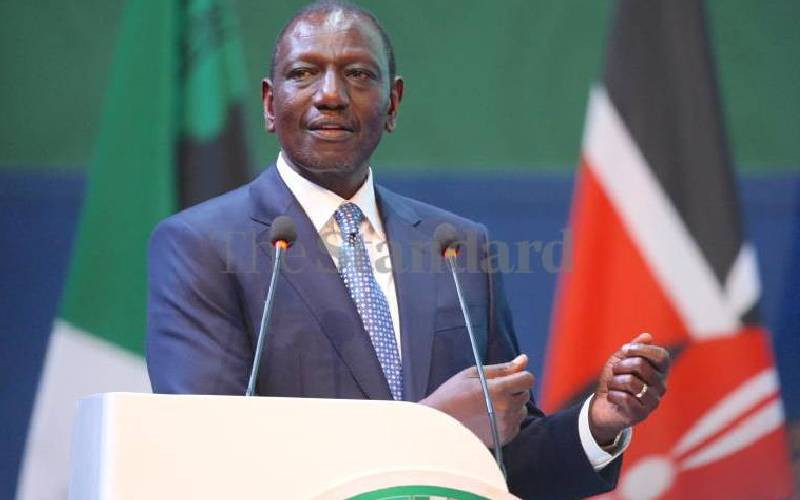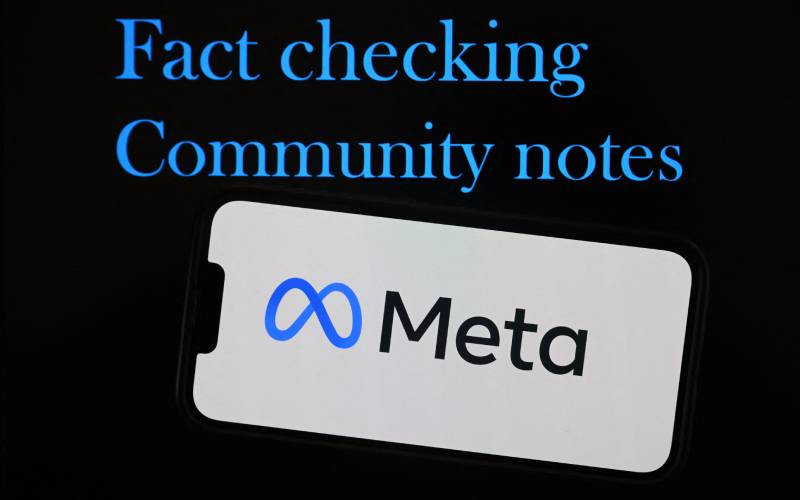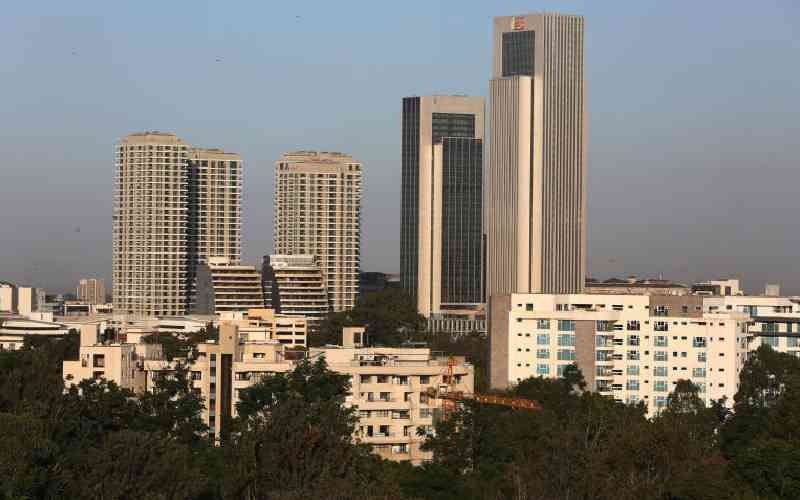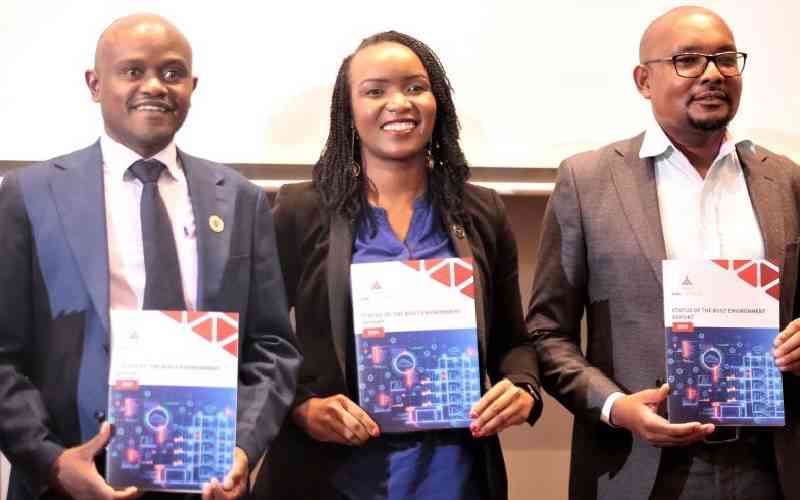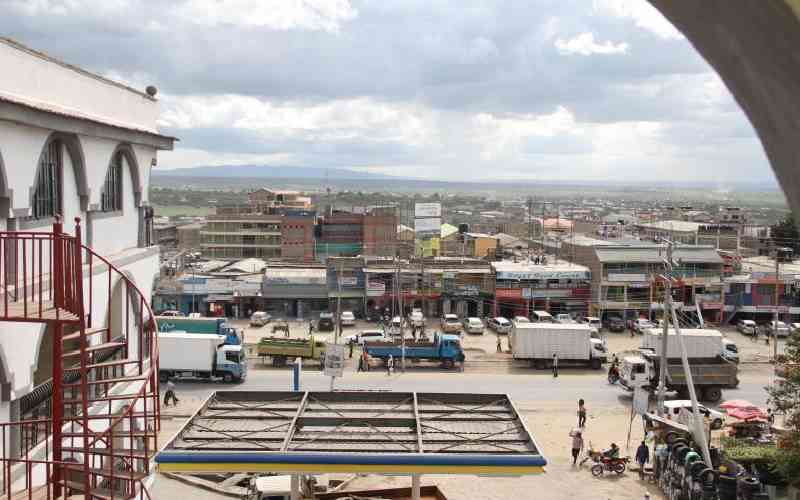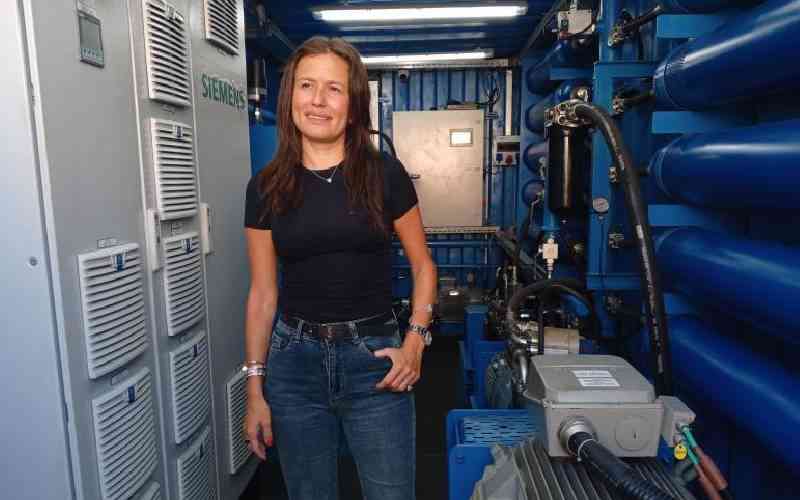
When Inna Braverman graduated from Haifa University with a degree in political science, she thought she was well-armed to fight for peace in the Middle East.
“That did not go so well,” she recalls jokingly. “There was no line-up of politicians ready to hire a young lady with a major in political science.”
She ended up at a renewable energy company initially as an English–Hebrew translator. It is during this period that she noted a gap in the market for wave energy - electricity created from waves in the ocean or sea.
“I saw that there was competition in wind and solar energy, but according to scientists and engineers, wave energy has much higher potential, but nobody is doing it,” she said.
This is how Eco Wave Power was born in 2011, with Ms Braverman as the founder and chief executive at the age of 24.
“I saw huge potential, and many companies with money, the best technical expertise and contacts were trying to do wave energy, but nobody succeeded. There is a lot of demand, but there is no supply, so it’s a perfect market, plus you have a positive impact on the environment,” she says during a tour of the power station at Jaffa Port, Tel Aviv, Israel.
This potential also exists in Kenya considering the country’s electricity connectivity stands at 78 per cent with a plan to stretch it to 98 per cent by 2027, according to Energy Principal Secretary Alex Wachira.
This involves increasing the number of connected households from the current 8.6 million to 12 million, according to data from the Kenya National Bureau of Statistics (Knbs).
Kenya’s potential also lies on the long coastline that has attracted power-generating firms interested in wave energy like SDE in 2011 and Wave Electricity Power Ocean Ltd (Werpo) in 2014, with not much reported on their progress in this front.
To ensure success, Ms Braverman says she studied why companies that ventured into the business failed and got the light bulb moment.
“All of them had the same problem: they went offshore in the middle of the ocean, which is too expensive, so I thought to myself, ‘I will do something that is simple enough and take over the whole industry,’” she chuckles.
Wello, one of such companies, filed for bankruptcy in 2023 after 15 years in business, while Oceanlinx still has its wave generator stranded in the ocean, and Pelamis could not get additional funding after running into financial headwinds.
So how does wave energy work? Floaters are connected to existent man-made structures like breakwaters or jetties, which are constructed to protect the land in the event of overflow of tides from ocean or sea water or as walkways into the water.
The floaters go up and down with the movement of the waves, pushing hydraulic cylinders filled with biodegradable fluid that is transmitted into the accumulators located on land.
This builds pressure so the higher the waves the higher the pressure. This pressure turns hydraulic motors, which turn the generators and transmit clean electricity to the grid via inverters.
“The whole system is controlled by a smart automation system that enables the smooth supply of electricity to the grid,” explains Ms Braverman.
While it is a novel way of generating electricity, it has borrowed some aspects from other systems like wind. Like in wind where the blades fold when it is strong to protect the system, in wave energy generation, when waves get stronger, the floaters lift up out of the water.
Wave energy while clean in line with climate change and sustainability conversation, cannot be applied in every water body.
“It will be good for any location that has a wave height of 50 centimetres and higher and stable. In a location like Dubai, you cannot install it because there are no wave activities –it is landlocked- you have water but you don’t have waves created. It’s like solar; you cannot put it where there is no sun,” adds Ms Braverman.
A major challenge, she says, is the fact that there is no regulation or legislation for wave energy since it is the new kid on the block for renewable energy.
“It can take as little as six months to build a power station, which is super easy, and as long as three years to get the regulations in place. I think that is the major difficulty on why it is not spreading as fast,” she says.
This is the same reason why the wave energy is yet to be explored in the country despite 92 per cent of electricity produced being renewable.
A 2018 National Energy Policy document notes that other renewable energy sources and technologies have not attracted considerable interest or have not been commercialised. Ocean energy is among them. Others include biomass gasification, bio-refinery technologies and concentrating solar power energy storage.
“Ocean energy possesses a high potential owing to the long coastline which Kenya is endowed with. The oceans contain huge amounts of power that can be drawn from different sources and exploited for generating useful energy. The most developed conversion systems use tidal energy, marine currents, and ocean waves,” reads the document prepared by former Energy Cabinet Secretary Charles Keter.
Some of the reasons why this source has not been explored include lack of legal and regulatory framework, inadequate data and information, and the lack of incentives.
Another advantage of wave energy, unlike solar, which is more widespread in the country, is waste disposal since there are no panels.
The power station also does not occupy acres of space. The pilot that Eco Wave Power installed at the coast of Jaffa Port, Tell Aviv, Israel, it fits in a 20-foot container.
 The Standard Group Plc is a multi-media organization with investments in media platforms spanning newspaper print
operations, television, radio broadcasting, digital and online services. The Standard Group is recognized as a
leading multi-media house in Kenya with a key influence in matters of national and international interest.
The Standard Group Plc is a multi-media organization with investments in media platforms spanning newspaper print
operations, television, radio broadcasting, digital and online services. The Standard Group is recognized as a
leading multi-media house in Kenya with a key influence in matters of national and international interest.


